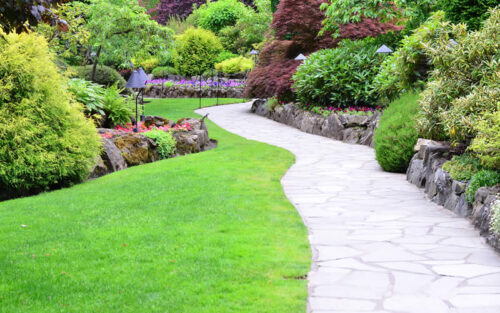DISCUSS THE IMPORTANCE OF LANDSCAPE ARCHITECTURE IN CREATING OUTDOOR SPACES
Landscape architecture is the art and science of designing outdoor spaces that blend natural and built environments in a way that enhances the quality of life, promotes biodiversity, and supports sustainability. As cities continue to grow and populations increase, the importance of landscape architecture in creating livable and sustainable urban environments cannot be overstated.
One of the most significant contributions of landscape architecture is its ability to improve the quality of life for people in urban areas. Studies have shown that access to green spaces, such as parks, gardens, and public plazas, has a positive impact on physical health and mental well-being. Green spaces provide opportunities for physical activity, relaxation, and social interaction, all of which are important for maintaining a healthy lifestyle.
In addition to promoting human health and well-being, landscape architecture also plays a critical role in supporting biodiversity. Urbanization and development have resulted in the loss of natural habitats, which has had a devastating impact on the environment and wildlife. Landscape architects work to create green spaces that support and enhance biodiversity by incorporating elements such as native plants, water features, and wildlife habitats.
Sustainability is another important consideration in landscape architecture. As concerns about climate change and resource depletion grow, landscape architects are incorporating sustainable practices into their designs. This includes the use of recycled materials, the implementation of renewable energy sources, and the creation of spaces that support sustainable transportation, such as walking and biking.
One example of a sustainable landscape architecture project is the High Line in New York City. The High Line is a 1.45-mile-long elevated park built on an old railroad track that had been abandoned for decades. The park features native plants, green roofs, and rainwater harvesting systems that reduce the amount of stormwater runoff and help to cool the surrounding area. The High Line has become a popular destination for locals and tourists alike and has been credited with revitalizing the surrounding neighborhoods.
Another example is the Cheonggyecheon Stream Restoration project in Seoul, South Korea. The project involved removing a six-lane highway and restoring the stream that had been buried underneath. The restored stream is now a thriving ecosystem that supports a diverse range of plant and animal species. The project has also reduced air pollution and improved the overall quality of life for residents in the surrounding area.
In conclusion, landscape architecture plays a critical role in creating outdoor spaces that enhance the quality of life, promote biodiversity, and support sustainability. By incorporating green spaces, native plants, and sustainable practices into their designs, landscape architects are helping to create livable and sustainable urban environments that benefit both people and the planet. As cities continue to grow and evolve, the importance of landscape architecture in shaping the built environment will only continue to grow.
KEY POINTS ON THE IMPORTANCE OF LANDSCAPE ARCHITECTURE IN CREATING OUTDOOR SPACES
• Landscape architecture enhances the quality of life for people in urban areas by providing access to green spaces, which have been shown to have a positive impact on physical health and mental well-being.
• Landscape architecture plays a critical role in supporting biodiversity by incorporating elements such as native plants, water features, and wildlife habitats in its designs.
• Sustainable practices are an important consideration in landscape architecture, including the use of recycled materials, renewable energy sources, and the creation of spaces that support sustainable transportation.
• Examples of successful landscape architecture projects include the High Line in New York City and the Cheonggyecheon Stream Restoration project in Seoul, South Korea.
• As cities continue to grow and evolve, the importance of landscape architecture in shaping the built environment will only continue to grow.


